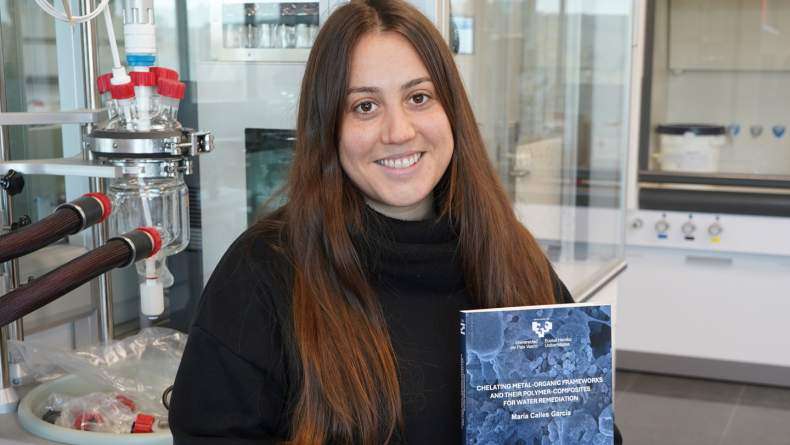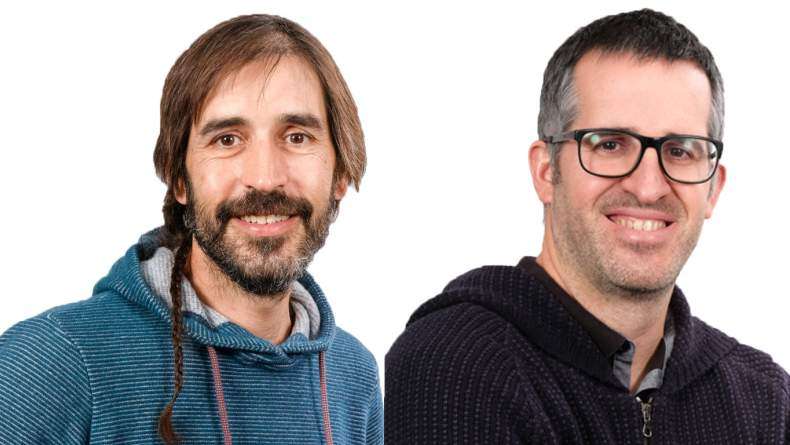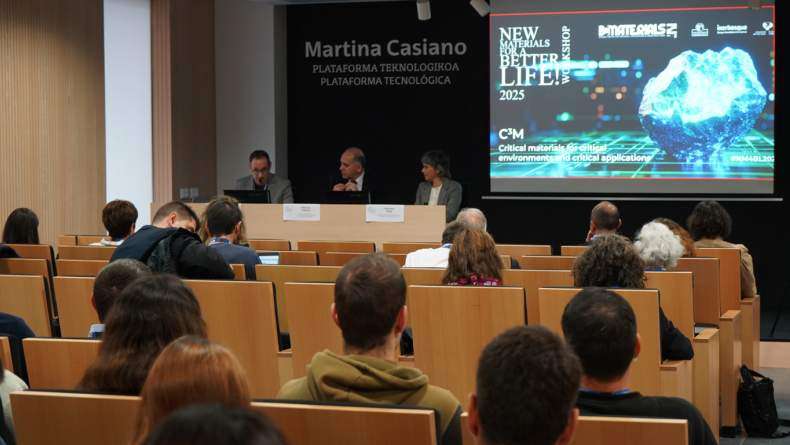BCMaterials Fortnightly Seminar #58: Irati Rodrigo & Vasileios Alexandrakis

IRATI RODRIGO
(BCMATERIALS)
The design of a new AC magnetometer
Magnetic hyperthermia is a cancer therapy, where magnetic nanoparticles (MNP) placed inside the tumour act as heat sources activated by an externally applied magnetic field. These nanoparticles increase the temperature of the tumour cells causing the destruction of the tumour. One of the most important parameters of MNP used in magnetic hyperthermia is their specific absorption rate (SAR), which is the absorbed energy per unit of nanoparticle mass. Our group has developed an accurate AC magnetometer, which allow the quantification of SAR. This magnetometer calculates the SAR measuring the dynamic magnetization with two pick up coils. SAR is obtained from the integral of the dynamic magnetization vs the applied magnetic field (generated by an inductor). This AC magnetometer works in a wide frequency range of AC magnetic field (149–1030 kHz) and with large field intensity: up to 35 kA m−1 at low frequencies and up to 22 kA m−1 at high frequencies (above 1 MHz). The main aim of this these is to design and built a new AC magnetometer that will work in higher field intensities and add a temperature controller of the sample. This will allow us to measures SAR in different temperature, which is very important to study new non invasive thermometry methods in order to measure the temperature of the tissue during the treatment. Two new AC magnetometers have been designed and studied for this purpose. I have simulated the magnetic field and dissipated power of the inductor using Finite element method (FEM) variating the parameters of the inductor, and analysing the result I have choose the best design with the optimal parameters.VASILEIOS ALEXANDRAKIS
(UPV/EHU - Dept. of Electricity and Electronics, ZTF-FCT)
“Hard/Soft” magnetic composites for magnetic recording applications
Hard disk drives (magnetic storage) for ultra-high storage densities require small grain sizes to fulfil the requirements for high signal to noise ratios. However, as the grains become too small, the bits are no longer magnetically stable. The reduction of grain size can be balanced by a large magnetocrystalline anisotropy K. Nevertheless, recording media based on highly magnetocrystalline anisotropy grains, like FePt, require a write (switching) field that is higher than the provided field by current write heads: it is the so-called writability issue. Hard/Soft” magnetic composites for high density recording were theoretically proposed to overcome the writability issue. Magnetic composites consist of two layers, one of which (“hard”) possesses high magnetocrystalline anisotropy (K), while the other (“soft”) layer has low anisotropy. The soft magnetic layer reduces the switching field and the hard magnetic layer preserves the thermal stability. Different “hard/soft” magnetic composites and the corresponding magnetization switching mechanisms will discussed.Related news
María Calles, BCMaterialseko doktore berria
María Calles García zoriondu nahi dugu UPV/EHUn Materialen Zientzia eta Teknologian doktoretza lortzeagatik. Abenduaren 4an Maríak ‘Chelating Metal-Organic Frameworks and Their Polymer-Composites…Bartzelonako Mikroelektronika Institutuko ikertzaileekin hitzaldi gonbidatua (abenduak 3)
Datorren abenduaren 3an, 12:00etatik aurrera Leioako Martina Casiano auditorioan, BCMaterialsek Bartzelonako Mikroelektronika Institutuko (IMB-CNM) (CSIC) Antón Guimerà eta Xavier Illa ikertzaile…Hitzaldi gonbidatua Liu Yaorekin metal-litiozko bateriei buruz (abenduak 2)
Datorren astelehenean, abenduaren 2an, Liu Yao Shanghai Institute of Applied Physics-eko irakasleak "Li Metal Batteries: From Liquid to Solid-State" hitzaldia aurkeztuko du BCMaterials-en. Hitzaldia…BCMaterials-en urteko workshoparen arrakasta, material kritikoei eskainia
BCMaterialsen urteko workshoparen 2025. edizio arrakastatsuak ehun bat lagun bildu zituen azaroaren 19an Leioan, artearen egoera aztertzeko eta material kritikoei, materialen aplikazio kritikoei eta…



